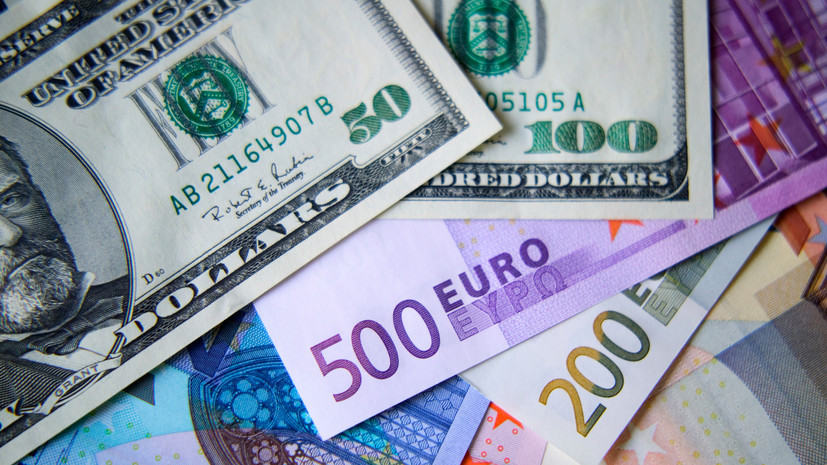On Thursday, December 1, the Russian currency shows mixed dynamics on the Moscow Exchange.
During the opening of trading, the dollar fell by 0.34% to 60.78 rubles, while the euro rose by 0.35% to 63.3 rubles.
Until the end of the year, one of the determining factors for the ruble will remain the imbalance of supply and demand in the country's foreign exchange market.
Andrey Maslov, an analyst at FG Finam, shared this opinion in an interview with RT.
“In general, we see that the ruble has been behaving quite stably lately.
This is largely due to the imbalance in the trade balance,” the expert said.
It should be noted that dollars and euros received from exports continue to flow into Russia in significant volumes, including due to relatively high energy prices.
At the same time, business interest in foreign banknotes remains relatively low, as imports have not yet been able to fully recover after the spring collapse.
As a result, according to the latest data from the Central Bank, from January to October 2022, the current account surplus of Russia's balance of payments (the difference between the inflow of foreign currency from abroad and its outflow outside the country) reached $215.4 billion. This is approximately 2.3 times more than for the same period in 2021.
“That is, even in the face of the still growing sanctions pressure, our trade balance is still positive.
Thus, a trade surplus is now a key factor in supporting the ruble, ”Sergey Suverov, investment strategist at Arikacapital, explained to RT.
However, as follows from the materials of the Central Bank, the situation in Russia's foreign trade has already begun to gradually change.
So, if in the first quarter of this year the country's balance of payments account surplus amounted to $69.8 billion, and in the second quarter it increased to $76.7 billion, in the third quarter, on the contrary, it dropped to $51.2 billion.
Experts attribute this to a gradual increase in imports and some reduction in exports in recent months.
Thus, the supply of foreign goods to Russia began to gain momentum again after the launch of the parallel import program and the reorientation of business to new suppliers.
Meanwhile, sales of energy resources from Russia abroad have declined slightly, as global demand for raw materials began to weaken due to the threat of a global recession.
“Most likely, commodity prices will remain under pressure from problems in the global economy, which will gradually lead to a reduction in Russia's foreign exchange earnings from exports.
In turn, imports continue to recover.
All this can upset the balance of demand for foreign currency and its supply in the country, contributing to the gradual weakening of the ruble, ”Dmitry Babin, an expert on the BCS World of Investments stock market, told RT.
Waiting for the ceiling
Experts believe that in the near future, foreign exchange market participants will closely monitor the new EU restrictions on the supply of Russian hydrocarbons.
So, already on December 5, an embargo on the import of oil transported by sea from the Russian Federation should come into force in the EU.
At the same time, Brussels wants to limit the cost of raw materials sold by Moscow to third countries.
In particular, the EU leadership plans to ban European companies from insuring and transporting oil from the Russian Federation by sea to other states at a price above a certain limit.
However, the EU itself cannot yet agree on the parameters of this initiative due to internal disagreements.
At the same time, Russia intends to completely cut off the supply of its oil to those countries that will support the EU restrictions.
This was announced on November 29 by Deputy Prime Minister Alexander Novak.
“We have a rather tough position here, I have already spoken about this more than once.
No matter what the price ceiling is.
Even if it is high, this is unacceptable in principle from the point of view of concluding contracts, ”RIA Novosti quotes Novak.
According to Dmitry Babin, while the restrictions of Europe can affect the ruble only psychologically.
Thus, in anticipation of a fall in Russia's revenue from oil exports, market speculators may increase their purchases of foreign currency, which will put some pressure on the ruble.
At the same time, according to Sergey Suverov, in the long term, new EU sanctions are unlikely to have a serious impact on the dynamics of the national currency.
“The oil embargo and the price ceiling can indeed lead to some reduction in Russian hydrocarbon exports in the early stages.
It is possible that the volume of foreign exchange earnings will temporarily decrease by about 10-15%, and this will weaken the ruble.
However, within a few months we will be able to finally reorient ourselves and redirect all export flows to Asian markets,” Suverov explained.
Gettyimages.ru
© Andrey Rudakov/Bloomberg
As noted by Dmitry Babin, in December, the high spending of the state budget, typical for the end of the year, may also play against the ruble.
Together with a seasonal increase in demand for imports, this will lead to an increase in foreign currency purchases in the domestic market, the analyst believes.
However, the expert does not expect a serious weakening of the national currency in the next month.
In his opinion, the dollar exchange rate may rise to 65-67 rubles, and the euro exchange rate - up to 67-69 rubles.
Mikhail Shulgin, head of the global research department at Otkritie Investments, shares a similar assessment.
According to his forecast, both indicators may end the year in the range of 64-66 rubles.
At the same time, Andrei Maslov does not rule out that the values will remain in the corridor of 60-65 rubles per dollar and euro.

